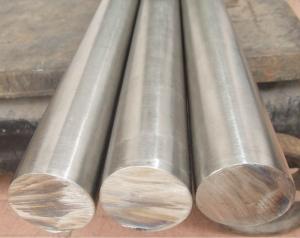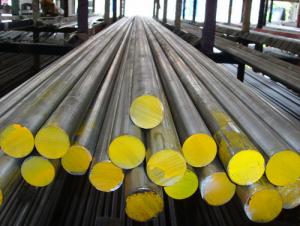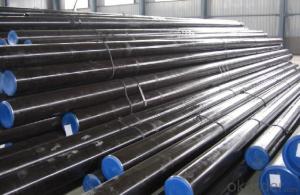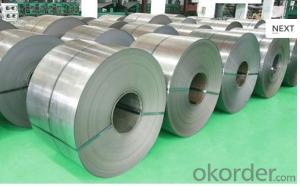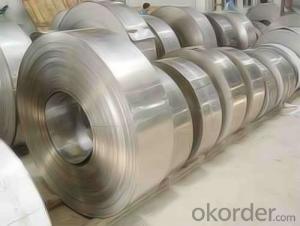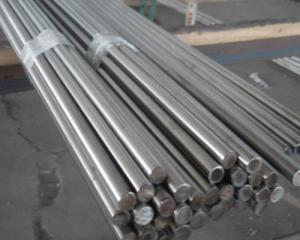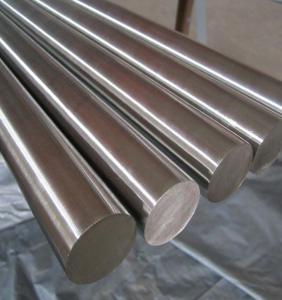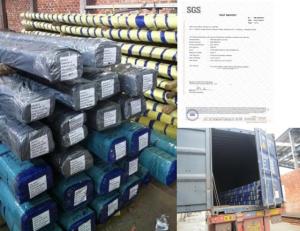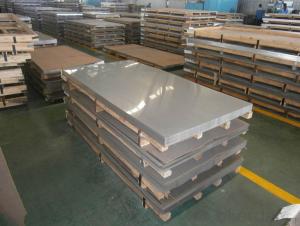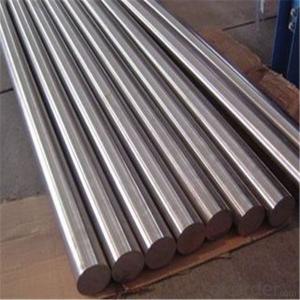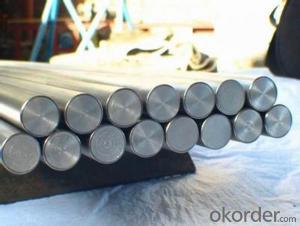310S Stainless Steel Bar
- Loading Port:
- China Main Port
- Payment Terms:
- TT or LC
- Min Order Qty:
- 5 Tons m.t.
- Supply Capability:
- 1000 Tons Per Month m.t./month
OKorder Service Pledge
OKorder Financial Service
You Might Also Like
Stainless Steel Bar
Stainless Steel Round Bright Bar
Hot-rolled Stainless Steel Black Bar
Grades:201、202、301、302、303、304、316、316L、321 etc
|
Diameter (mm) |
weight (kg/m) |
Diameter (mm) |
weight (kg/m) |
Diameter (mm) |
weight (kg/m) |
Diameter (mm) |
weight (kg/m) |
|
2 |
0.025 |
14 |
1.221 |
30 |
5.607 |
50 |
15.575 |
|
3 |
0.056 |
15 |
1.402 |
32 |
6.38 |
55 |
18.846 |
|
4 |
0.1 |
16 |
1.595 |
34 |
7.202 |
60 |
22.428 |
|
5 |
0.156 |
18 |
2.019 |
35 |
7.632 |
65 |
26.322 |
|
6 |
0.224 |
19 |
2.249 |
36 |
8.074 |
70 |
30.527 |
|
7 |
0.305 |
20 |
2.492 |
38 |
8.996 |
75 |
35.044 |
|
8 |
0.399 |
22 |
3.015 |
40 |
9.968 |
80 |
39.872 |
|
9 |
0.505 |
24 |
3.588 |
42 |
10.99 |
85 |
45.012 |
|
10 |
0.623 |
25 |
3.894 |
45 |
12.616 |
90 |
50.463 |
|
11 |
0.754 |
27 |
4.542 |
46 |
13.183 |
95 |
56.226 |
|
12 |
0.897 |
28 |
4.884 |
48 |
14.354 |
100 |
62.3 |
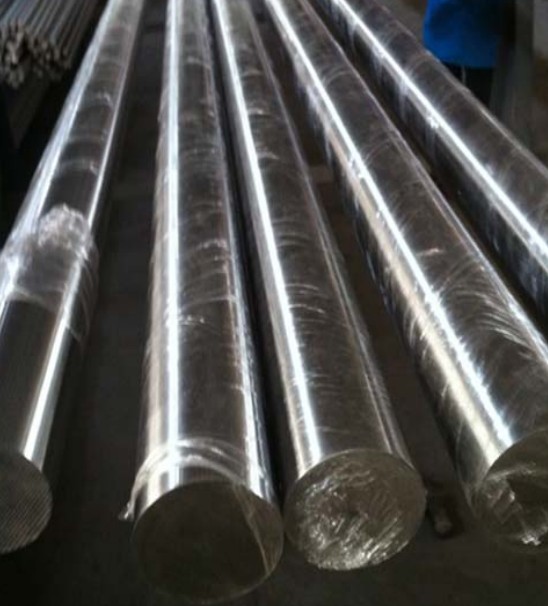
- Q:What is the difference between stainless steel bars and stainless steel sheets?
- Stainless steel bars and stainless steel sheets are both forms of stainless steel, but they differ in their shapes and applications. Stainless steel bars are long, solid cylindrical shapes that are typically produced in straight lengths. They are commonly available in round, square, hexagonal, or flat shapes. These bars are often used in construction, engineering, and industrial applications where durability and strength are essential. Some common uses include structural support, machinery components, and reinforcement for concrete structures. Stainless steel bars are also popular in the production of fittings, valves, and fasteners. On the other hand, stainless steel sheets are flat, thin plates that are available in various thicknesses and sizes. They are usually produced in large rectangular or square shapes. Stainless steel sheets are known for their versatility and are commonly used in various industries such as automotive, architecture, and kitchen appliances. They can be easily formed, cut, or welded to create different shapes and designs. Stainless steel sheets are frequently used in applications such as countertops, backsplashes, decorative panels, and automotive body parts. In summary, the main difference between stainless steel bars and stainless steel sheets is their shape and how they are used. Bars are solid cylindrical shapes used for structural purposes, while sheets are flat plates used for a wide range of applications that require versatility and easy customization.
- Q:Can stainless steel bars be used in the manufacturing of pumps and valves?
- Yes, stainless steel bars can indeed be used in the manufacturing of pumps and valves. Stainless steel is a highly versatile and corrosion-resistant material, making it an ideal choice for applications where durability and reliability are important, such as in the production of pumps and valves. The high strength-to-weight ratio of stainless steel bars allows for the construction of robust and long-lasting components, ensuring the efficient and effective operation of pumps and valves. Additionally, stainless steel's resistance to corrosion, rust, and staining makes it suitable for use in various environments, including those involving exposure to chemicals, liquids, and high temperatures. Overall, the use of stainless steel bars in the manufacturing of pumps and valves helps to guarantee the longevity and performance of these essential industrial components.
- Q:Are stainless steel bars suitable for architectural applications?
- Yes, stainless steel bars are highly suitable for architectural applications. They offer excellent corrosion resistance, durability, and a sleek aesthetic appearance, making them a popular choice for a wide range of architectural designs, including buildings, bridges, and decorative elements. Stainless steel bars also have high strength-to-weight ratio, allowing for versatility in design while maintaining structural integrity. Overall, stainless steel bars provide both functional and aesthetic benefits, making them a preferred material in architectural applications.
- Q:What is the difference between square and flat stainless steel bars?
- The main difference between square and flat stainless steel bars lies in their shape and cross-sectional design. A square stainless steel bar, as the name suggests, has equal width and height dimensions, resulting in a square shape when viewed from the end. This uniform shape provides structural stability and resistance to bending. Square bars are commonly used in applications requiring support or reinforcement, such as construction, manufacturing, and engineering. On the other hand, a flat stainless steel bar has a rectangular cross-section with one dimension being significantly larger than the other. The larger width provides a broader surface area, making it suitable for applications that require a larger contact area or load-bearing capacity. Flat bars are often used as supports, braces, or for decorative purposes in architectural designs. In terms of functionality, both square and flat stainless steel bars offer high strength, corrosion resistance, and durability. However, their distinct shapes make them better suited for different applications. Square bars excel in providing rigidity and stability, while flat bars are more suitable for load distribution and spanning wider areas. Ultimately, the choice between the two depends on the specific requirements and intended use of the stainless steel bar in question.
- Q:Are stainless steel bars suitable for the food processing industry?
- Yes, stainless steel bars are highly suitable for the food processing industry. Stainless steel is a popular choice in the industry due to its numerous favorable properties. Firstly, stainless steel is resistant to corrosion, which is crucial in an environment where food and liquids are frequently present. This resistance to corrosion ensures that the bars maintain their integrity and hygiene standards for longer periods, reducing the risk of contamination and foodborne illnesses. Additionally, stainless steel bars are easy to clean and maintain, making them ideal for use in food processing facilities. They are non-porous, which means that they do not absorb bacteria, odors, or flavors, ensuring that the bars do not contaminate the food being processed. Stainless steel bars also have high heat resistance, allowing them to withstand the rigorous heat treatment processes often required in the food industry. This heat resistance makes stainless steel bars suitable for applications such as grilling, baking, and boiling. Furthermore, stainless steel is a durable material that can withstand heavy usage and harsh cleaning chemicals without compromising its structural integrity. This durability ensures that the bars maintain their shape and strength over time, reducing the need for frequent replacements and minimizing downtime in food processing operations. Overall, stainless steel bars offer the food processing industry a combination of corrosion resistance, cleanliness, heat resistance, and durability, making them highly suitable for use in this industry.
- Q:Are stainless steel bars suitable for electrical applications?
- Yes, stainless steel bars are suitable for electrical applications. Stainless steel has excellent electrical conductivity and is resistant to corrosion, making it a reliable choice for various electrical components and wiring systems.
- Q:How do stainless steel bars resist caustic soda?
- Stainless steel bars resist caustic soda due to their unique chemical composition and surface characteristics. Stainless steel is primarily composed of iron, chromium, and other alloying elements such as nickel and molybdenum. The addition of chromium creates a passive oxide layer on the surface of the steel, known as chromium oxide, which provides excellent corrosion resistance. Caustic soda, also known as sodium hydroxide, is a strong alkaline compound that can cause corrosion in many materials. However, stainless steel bars are highly resistant to caustic soda due to the following reasons: 1. Passivation: The chromium oxide layer on the surface of stainless steel bars acts as a protective barrier against corrosive agents, including caustic soda. This passive film forms spontaneously when exposed to oxygen, providing a self-healing mechanism that prevents further corrosion. 2. Chemical stability: Stainless steel bars have a high chemical stability, making them resistant to the strong alkaline properties of caustic soda. The chromium content in stainless steel enhances its stability, preventing the material from reacting with caustic soda and deteriorating over time. 3. Pitting resistance: Stainless steel bars also exhibit excellent resistance to pitting corrosion, which is a localized form of corrosion that can occur in the presence of aggressive chemicals like caustic soda. The passive oxide layer on stainless steel prevents the formation of pits and crevices, ensuring long-term resistance to caustic soda exposure. 4. Surface finish: Stainless steel bars are often finished with a smooth and polished surface, which further enhances their resistance to caustic soda. A smooth surface minimizes the adherence of caustic soda, reducing the chances of localized corrosion and making it easier to clean and maintain the material. In summary, stainless steel bars resist caustic soda due to their passive oxide layer, chemical stability, pitting resistance, and surface finish. These properties make stainless steel a preferred material for various applications where resistance to corrosive substances like caustic soda is essential, such as in chemical processing, food processing, and pharmaceutical industries.
- Q:Are stainless steel bars suitable for wastewater treatment plants?
- Yes, stainless steel bars are suitable for wastewater treatment plants. Stainless steel is highly resistant to corrosion and rust, making it a durable and long-lasting material choice for the harsh environment of wastewater treatment plants. Additionally, stainless steel bars can withstand the chemical and physical demands of the wastewater treatment process, making them an ideal option for infrastructure and equipment in these plants.
- Q:Can stainless steel bars be used in the oil refining industry?
- Indeed, the oil refining industry can utilize stainless steel bars. Stainless steel, being an alloy that resists corrosion, provides commendable strength and durability, thus making it suitable for various applications in the oil refining sector. Due to its capacity to withstand severe conditions such as high temperatures, pressure, and exposure to corrosive substances, stainless steel is frequently employed in equipment and components such as pipelines, tanks, valves, and fittings. The preference for stainless steel bars in this industry arises from their corrosion resistance, which aids in preventing leaks and preserving the integrity of the refining process. Furthermore, stainless steel requires minimal effort to clean and maintain, thereby rendering it a cost-effective option for oil refining operations.
- Q:Can stainless steel bars be used in the manufacturing of reactor vessels?
- Yes, stainless steel bars can be used in the manufacturing of reactor vessels. Stainless steel is a type of alloy that contains iron, chromium, and other elements, which gives it excellent corrosion resistance properties. This makes stainless steel bars an ideal material for applications where the reactor vessel needs to withstand harsh conditions, such as high temperatures and corrosive environments. Stainless steel bars offer several advantages for reactor vessel manufacturing. Firstly, they have high strength and durability, allowing the vessel to withstand the internal pressure and external forces that it may encounter during operation. Secondly, stainless steel has excellent resistance to corrosion, which is crucial for reactor vessels that often come into contact with corrosive substances or high-temperature chemicals. This corrosion resistance helps to extend the lifespan of the reactor vessel and ensures its safe and reliable operation. In addition, stainless steel bars can be easily fabricated and welded, allowing for various shapes and sizes of reactor vessels to be produced. They also have good heat resistance properties, which is important for reactor vessels that experience high-temperature operations. Overall, stainless steel bars are a suitable choice for manufacturing reactor vessels due to their strength, corrosion resistance, and ability to withstand harsh operating conditions.
1. Manufacturer Overview |
|
|---|---|
| Location | Jiangsu, China |
| Year Established | 2010 |
| Annual Output Value | above US$8 million |
| Main Markets | East Asia, Middle East, West Europe |
| Company Certifications | |
2. Manufacturer Certificates |
|
|---|---|
| a) Certification Name | |
| Range | |
| Reference | |
| Validity Period | |
3. Manufacturer Capability |
|
|---|---|
| a)Trade Capacity | |
| Nearest Port | Shanghai |
| Export Percentage | |
| No.of Employees in Trade Department | above 50 people |
| Language Spoken: | English, Chinese, Arabic |
| b)Factory Information | |
| Factory Size: | about 15000 square meter |
| No. of Production Lines | above 4 |
| Contract Manufacturing | OEM Service Offered,Design Service Offered |
| Product Price Range | Average |
Send your message to us
310S Stainless Steel Bar
- Loading Port:
- China Main Port
- Payment Terms:
- TT or LC
- Min Order Qty:
- 5 Tons m.t.
- Supply Capability:
- 1000 Tons Per Month m.t./month
OKorder Service Pledge
OKorder Financial Service
Similar products
New products
Hot products
Related keywords





